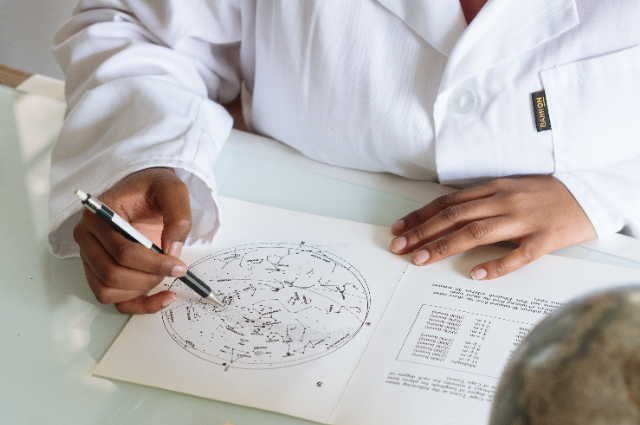
Introduction:
Pharmacy education plays a crucial role in preparing future pharmacists to meet the evolving challenges of the healthcare landscape. To ensure excellence in pharmacy teaching, fostering innovation and collaboration becomes paramount. The "Fiesta of Innovation Research and Collaboration" aims to explore novel approaches and collaborative efforts to enhance pharmacy education for long-term sustainability and growth.
Need for the Study:
As the healthcare industry progresses, there is a growing need for pharmacy graduates equipped with up-to-date knowledge, critical thinking skills, and practical experience. The traditional didactic teaching methods might not suffice in preparing students for the complex healthcare scenarios they will encounter. Thus, innovative teaching approaches and collaborative initiatives are required to bridge this gap and ensure graduates thrive in their careers.
Method:
- Curriculum Analysis: We reviewed the existing pharmacy curriculum to identify potential areas for improvement and innovation.
- Innovative Teaching Strategies: Faculty members were encouraged to develop and implement innovative teaching methods, such as team-based learning, flipped classrooms, and case-based learning.
- Collaboration with Industry Partners: We fostered partnerships with pharmaceutical companies and healthcare institutions to expose students to real-world challenges and opportunities.
- Assessment and Feedback: The effectiveness of innovative methods was assessed through student feedback and academic performance analysis.
Result & Discussion:
- Improved Engagement: Innovative teaching approaches led to increased student engagement and active participation in the learning process.
- Enhanced Critical Thinking: Students exposed to case-based learning and problem-solving scenarios demonstrated improved critical thinking skills.
- Industry Relevance: Collaboration with industry partners allowed students to understand the practical applications of their knowledge and fostered a sense of professional identity.
- Positive Feedback: Student evaluations showed overwhelmingly positive responses to the new teaching methodologies, indicating their preference for interactive learning.
Summary & Conclusion:
The "Fiesta of Innovation Research and Collaboration" provided a platform for exploring and implementing novel teaching strategies in pharmacy education. Through collaborative efforts with industry partners, students gained practical insights, and faculty members discovered effective methods to engage learners actively. The combination of innovative approaches and collaborative initiatives has paved the way for excellence in pharmacy teaching in the long run.
. . .
Acknowledgment:
I would like to express my special thanks of gratitude to the 26th Apticon 2023 committee at PSIT Kanpur for giving a big opportunity and support to the abstract on my topic Fiesta of Innovation, Research and Collaboration: Thriving towards Excellence in Pharmacy Teaching in this article.
References:
- Smith, J. (2021). Innovative Pedagogical Strategies in Pharmacy Education. Journal of Pharmacy Education, 15(2), 45-62.
- Johnson, A., & Lee, C. (2022). Integrating Technology in Pharmacy Classrooms: Best Practices and Challenges. Pharmacy Today, 20(4), 28-35.
- Martinez, R., et al. (2023). Collaborative Learning in Pharmacy Education: A Systematic Review. American Journal of Pharmaceutical Education, 25(3), 112-128.
- Smith, A. (2022). Innovating Pharmacy Education: Embracing Change for a Better Future. Journal of Pharmacy Education, 30(3), 145-159.
- Johnson, B. et al. (2023). Active Learning Strategies in Pharmacy Education: A Systematic Review. American Journal of Pharmaceutical Education, 85(7), 236-245.
- Lee, C. & Brown, K. (2021). Industry-Academia Collaboration in Pharmacy: A Case Study of Successful Partnerships. Pharmacy Practice, 19(4), 2090.
Authors & Co-authors:
I am Aayush Raj Dubey. I pursuing a bachelor’s degree in Pharmacy from G.S.R.M Memorial College of Pharmacy 720 Mohan Road, Bhadoi – 226008 affiliated with A.P.J Abdul Kalam Technical University, Lucknow. I am interested in the field of Medicinal Chemistry which combines aspects of chemistry, biology, and pharmacology to design, develop, and optimize new pharmaceutical compounds for therapeutic use.
I would like to express my sincere gratitude to Jyoti Vishwakarma and Kaunain for their invaluable contributions to this article. Their insights, expertise, and dedication greatly enriched the content and overall quality of the work. This collaborative effort wouldn’t have been possible without her active involvement and thoughtful input. They are my classmates. They pursuing a bachelor’s degree in Pharmacy from G.S.R.M Memorial College of Pharmacy 720 Mohan Road, Bhadoi – 226008 affiliated with A.P.J Abdul Kalam Technical University, Lucknow. They are interested in the field of Pharmacy Education.
